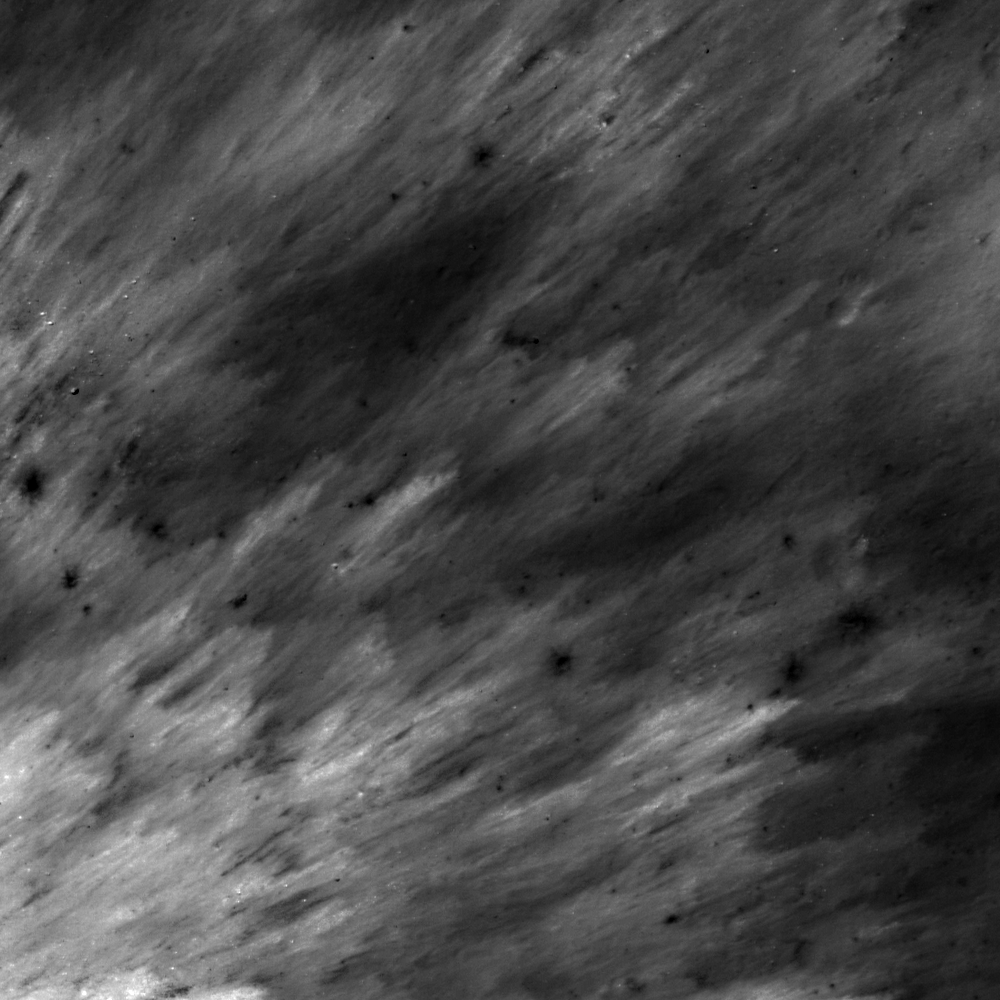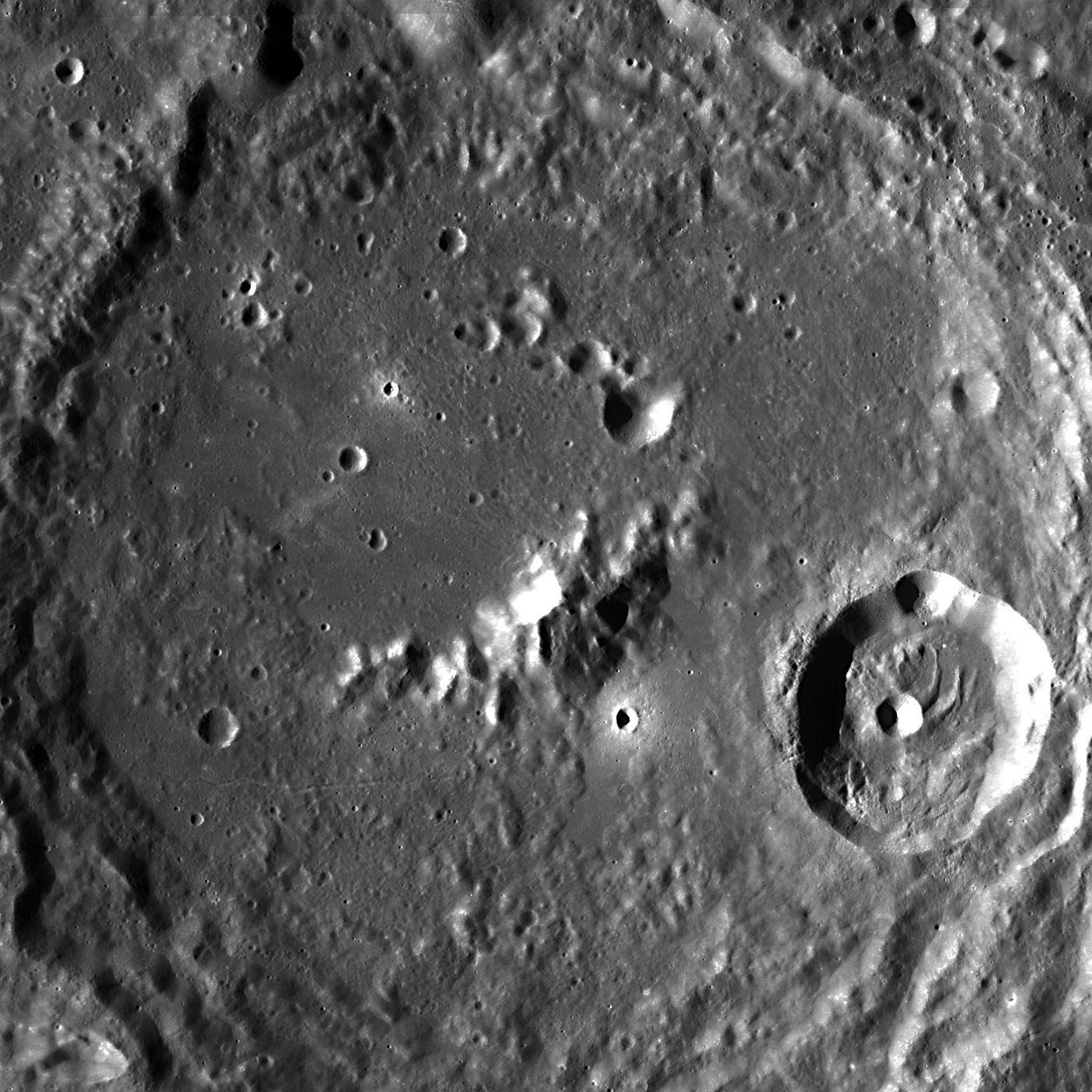
Impact crater ejecta is usually distributed semi-uniformly around an impact crater. Immature ejecta from a fresh crater has a higher albedo than the mature material on the surrounding surface, and so fresh craters easily stand out against the mature background. So why do the smaller craters in today's Featured Image have a lower albedo? On the Moon this is often due to a cryptomare located underneath the bright ejecta blanket. Taking a step back and looking at this area in the WAC context image gives us a better idea of how to interpret this scene.
This fresh crater is actually located in the much larger 160 km diameter Keeler crater. Keeler crater is located in the highlands and instead of having a mare flooded floor, Keeler's floor is covered in impact melt. It is possible that the small craters are exposing buried impact melt under the immature ejecta. However, it is more likely that the small craters expose the mature regolith that is only thinly covered by the bright ejecta. The end result is a polka-dot laden ejecta blanket.
How many low albedo craters are there in the full NAC frame?
Related Posts:
Dark Craters on a Bright Ejecta Blanket
Intricate young ejecta blanket in ancient Murchison Crater
Published by Drew Enns on 23 November 2011
